SHA and ACUA Elections Candidates Slate 2024
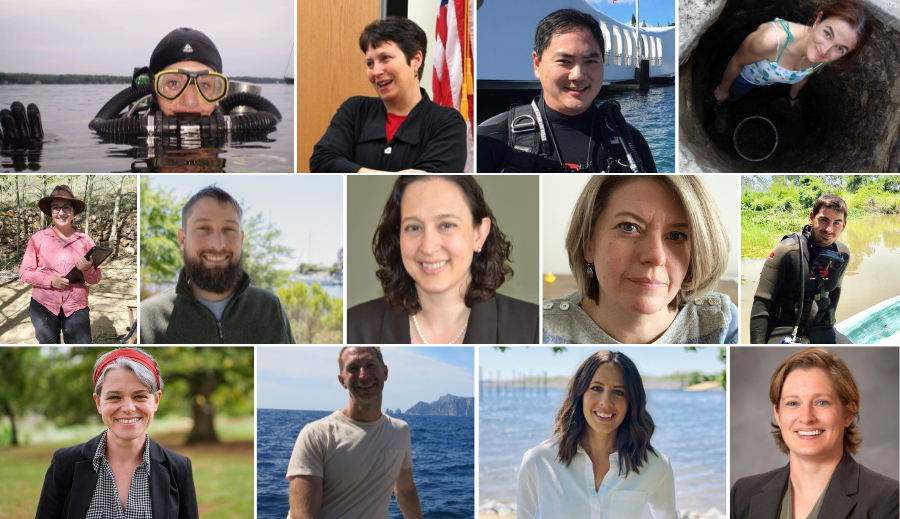
SHA and ACUA Elections 2024 Candidates Biographic Statements
- SHA BOARD OF DIRECTORS
- NOMINATIONS AND ELECTIONS COMMITTEE
- COMMUNICATIONS EDITOR
- ACUA BOARD OF DIRECTORS
SHA Board of Directors
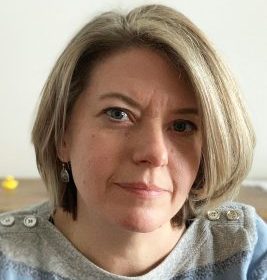
Name: April M. Beisaw
Present Position: Full Professor of Anthropology, Vassar College, NY
Education: M.A., Ph.D., Anthropology, Binghamton University; B.A., Anthropology and Chemistry, Rutgers University
Professional Service to SHA and Other Societies: SHA: Associate Editor, Historical Archaeology, 2020–present; Conference Program committee (2022); Historic Huguenot Street: Board Member, 2023–present
Other societies: Register of Professional Archaeologists: Standards Board Member, 2013–2015
Research Interests: Contemporary archaeology, water systems, institutions, protests, environmentalisms, zooarchaeology, taxonomy, ethics, repatriation
Biographical Statement:
I am a professor of anthropology at Vassar College, in New York’s Hudson Valley. At Vassar, I teach courses on archaeology, museum ethics, forensic anthropology, and haunting heritage. During the Spring 2025 semester, I will be a Fulbright Scholar working at the Natural History Museum Vienna, in Austria. There I will be researching the wild-domestic species divide through zooarchaeology, taxonomy, and museum exhibit design. At Vassar I have led NAGPRA compliance efforts since 2019. At this time, all ancestors of Native American origin held by Vassar have been claimed by their descendants and are being returned with full respect of Indigenous practices and ways of knowing.
My recent publications include a co-edited volume on archaeological ethics titled Sins of Our Ancestors (and of Ourselves): Confronting Archaeological Legacies, a single-authored contemporary archaeology monograph Taking Our Water for the City: Archaeology of New York City’s Watershed Communities, and a co-authored article “Mapping a Poorhouse and Pauper Cemetery as Community Engaged Memory Work” published in the International Journal of Historical Archaeology. In press is a co-authored monograph The Archaeology of American Protests.
While currently employed as an academic archaeologist, I have significant experience in cultural resource management. I have also worked for a county archaeology program, an environmental consulting firm, as a consultant for the National Park Service, and as a faunal consultant through my own sole proprietor LLC (a certified woman-owned business in the state of Michigan).
Given the qualifications and experience outlined in your biographical statement, what do you believe you can contribute to SHA if elected?
If elected, I would bring experience with and appreciation for the many different ways of being an archaeologist. My anchor has always been in local and community-based work, doing the archaeology that needs to be done where I live instead of following an academic or region-specific interest. Working alongside non-archaeologists has honed my team-work and communication skills. I am a patient listener and enjoy co-creating solutions that serve the needs of multiple parties.
If elected to serve SHA, what priorities would you emphasize?
My first priority is always ethical practice that considers the impacts of what archaeologists do and how archaeology is used. Other priorities include ensuring that there are ways for members to be involved in the organization beyond conference attendance. This includes mechanisms for celebrating the accomplishments of students and early career professionals. I have benefitted from professional mentoring and affordable workshops and would support initiatives that ensure access to such career development opportunities.
Please include a statement on your commitment to Diversity, Equity, Inclusion, Belonging, and Mattering (DEIB&M).
I believe my advocacy for diversity and belonging is best exemplified by the volume that I recently co-edited with Katie Kirakosian, David Witt, and Ryan Wheeler. Published by the Archaeology Division of the American Anthropological Association in 2023, Sins of Our Ancestors (and of Ourselves): Confronting Archaeological Legacies brought together archaeologists of many identities and career trajectories to confront problems in our field and point towards better and more inclusive futures. My single-authored chapter in that volume is titled “Archaeologists as Indian Advocates?: Lessons for Today from Skinner, the Little Weasel, Moorehead, the Indian Commissioner; and Other Predecessors.” In that article I speak of my struggles to find the right ways to be an ally during the Dakota Access Pipeline actions at Standing Rock and to move my employer towards compliance with the letter and spirit of NAGPRA. As a teacher and writer, I am mindful of biases that can be created through syllabus development and citation practice. As a mentor, I offer junior scholars and students opportunities to co-author publications and presentations. As chair of the anthropology department, I worked to ensure that contingent faculty were supported and treated with respect. Financially, I support inclusivity by donating money to the Society for American Archaeology’s Native American Scholarship fund, the Black Trowel Collective’s mutual aid fund, and other organizations and initiatives.
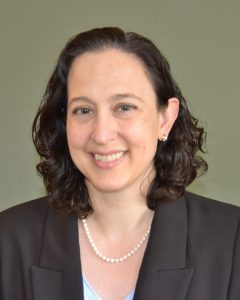
Name: Alicia Caporaso
Present Position: Benthic Ecology Lead, Bureau of Ocean Energy Management; Adjunct Faculty, Minnesota State University
Education: Ph.D., Archaeological Oceanography, University of Rhode Island Graduate School of Oceanography, 2011; M.A., Anthropology, University of Nebraska, 2004; B.A., Anthropology, University of Nebraska, 2001; B.S., Interdisciplinary Engineering, University of Nebraska, 2001
Professional Service to SHA and Other Societies: SHA: Member, 2002–present; Member, Nominations and Elections Committee, 2009; Member, Academic and Professional Training Committee, 2011–present; Chair, Student Paper Prize, 2018–present; Judge, Student Paper Prize, 2012–present; Member, Research Editors Committee; Co-Publications Associate Editor; Graduate Associate Student Member, ACUA 2007–2010; Member, Student Sub-Committee of the Academic and Professional Training Committee, 2008–2011; Member, Conference Committee, 2004
Other societies: North American Society for Oceanic History (NASOH): Vice President, 2021–present; Council Member, 2017–2021; Judge, Lyman Book Award, 2023–present; Register of Professional Archaeologists, 2004–present; Society for American Archaeology, 2003–present
Research Interests: Maritime landscape archaeology; maritime landscape ecology; ecology of submerged cultural heritage; deep-water site exploration and research; intersection of art, memorialization, and archaeological/historical research; frontier processes; North American fur trade; historical metallurgy
Biographical Statement:
I am the only practicing professional archaeologist with advanced degrees in Oceanography, Anthropology, and Engineering. I am currently the benthic ecology lead at the Bureau of Ocean Energy Management (BOEM) within the Biological and Social Sciences Section of the Gulf of Mexico Regional Office in New Orleans, Louisiana. In this position, I am working with academic and federal partners to pioneer the new field of the ecology of submerged cultural heritage, integrating the analysis of archaeological site and landscape formation processes with biological colonization, community structure, and community succession. Prior to joining BOEM in 2012, I was with the National Park Service as a Cultural Resources Specialist at the George Washington Memorial Parkway in Washington, DC. While completing my Ph.D., I was an instructor in the Anthropology and Sociology Department at the University of Rhode Island and worked for the National Park Service, Northeast Regional Office and I am currently and adjunct professor in the Biology Department at Minnesota State University. I have also directed field research for the Saint Eustatius Center for Archaeological Research in the Dutch Caribbean. Recent publications include an edited volume on maritime archaeological landscape formation processes, published through the SHA Co-Pub series Where the Land Meets the Sea, and I guest edited a thematic issue in The Journal of Maritime Archaeology entitled Art, Monument, and Memory. I have been an active member of SHA since 2002.
Given the qualifications and experience outlined in your biographical statement, what do you believe you can contribute to SHA if elected?
As a member of the SHA Board of Directors, I would bring my experience as both an underwater and terrestrial archaeologist, in both government and academic practices. Throughout my career as a professional archaeologist, I have had the opportunity to serve SHA in many capacities, first as a student, then as an employee of the federal government, on several committees including the Nominations and Elections Committee, the Academic and Professional Training Committee, the Research Editors Committee, the Advisory Council for Underwater Archaeology, and the Conference Committee. I am in the unique position of concurrently participating in three scientific fields: archaeology, engineering, and oceanography, and believe I can contribute to the board a key understanding of how the different scientific and diverse perspectives of the SHA membership can integrate a wealth of knowledge and diversity of experience, to lead SHA through the continuous evolution of multidisciplinary science and the profession of historical and underwater archaeology.
If elected to serve SHA, what priorities would you emphasize?
I would prioritize and promote SHA’s ongoing efforts in developing, improving, and promoting ethical practices within historical and underwater archaeology. This includes expanding opportunities within SHA for marginalized, underrepresented, and/or underserved society members at all stages within the profession, students through senior practitioners, and amongst the three primary fields of archaeological employment: academic, government/management, and CRM. I would also work to strengthen membership retention—members should find value in their membership as a student, during their transition to an early career practitioner, when established in their field, and during retirement. I believe SHA also holds a responsibility to archaeological descendant communities, stakeholders, and the public. Our society should establish a stronger reputation as a source for accurate, ethical information so that it is recognized as a primary source for those seeking archaeological knowledge. The coronavirus pandemic caused many members to miss seeing fellow archaeological colleagues in person for over two years. Though we are now a few years removed from that time, I still feel the impact from it. I realized during this time how important engagement with other SHA members at conferences and other SHA meetings and events has meant for me both socially and professionally. I want SHA to take further advantage of the developments that have resulted from the isolation (virtual meeting spaces, online fora, etc.) and expand membership engagement throughout the year. I believe this will improve both retention and participation amongst SHA members, and work to increase membership and SHA’s reputation overall.
Please include a statement on your commitment to Diversity, Equity, Inclusion, Belonging, and Mattering (DEIB&M).
I acknowledge, support, and am committed to SHA’s position on Diversity, Equity, Inclusion, Belonging, and Mattering. Embracing DEIB&M can only strengthen our society and make us more attractive to future members. As a member of the SHA board, I would ensure that deliberations and actions would be measured against the society’s DEIB&M mission.
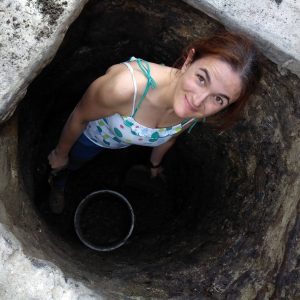
Name: Tânia Manuel Casimiro
Present Position:Researcher and Lecture, NOVA University of Lisbon
Education: Post-doctoral fellow, University of Boston, 2015; Post-doctoral fellow, University of Newfoundland, 2015; Ph.D., NOVA University of Lisbon, 2011; M.A., University College London, 2005; B.A., University of Lisbon, 2004
Professional Service to SHA and Other Societies: SHA: Member, 2012–present; Chair, Lisbon SHA2023 conference; Terrestrial Co-chair, SHA2020 Boston
Other societies: Society Post-Medieval Archaeology (SPMA): Vice-president (president-elected); Lisbon Archaeology Society: President; Contemporary and Historical Archaeology and Theory Steering Committee: Member
Research Interests: Cultural heritage, historical archaeology, archaeological theory, globalization, material culture, maritime connections, household archaeology, international trade, community archaeology
Biographical Statement:
I am a Portuguese Archaeologist dedicated to Historical Archaeology. My research focuses on early modern and contemporary global contacts of people and objects, and I work both in terrestrial and underwater sites. On the more theoretical level, I deal with frameworks concerning how people from different cultural backgrounds and objects interact in the formation of identities and how they can reflect global contacts, affecting local realities, incorporating diverse historical narratives, and highlighting the enduring impact of marginalized communities in the understanding of the past. Although this is my major area of research, I have worked and published about archaeological sites and collections from the Iron Age to the 21st century. This vast chronology has allowed me to observe and develop frameworks and methodologies for interpreting long-term structural changes in social and cultural structures which I have published extensively in English, Portuguese, and Spanish.
I have developed new methods of identification of Portuguese material culture that are used around the world by different people, and the chronologies I have attributed to Portuguese ceramics are used worldwide in the classification of post-medieval archaeological sites. I was the first female Ph.D. in Historical Archaeology in Portugal and the first to deal with globalization in archaeology. Currently, I have a research and teaching position at NOVA University of Lisbon.
Given the qualifications and experience outlined in your biographical statement, what do you believe you can contribute to SHA if elected?
Given my background I believe I can offer significant contributions to SHA from several perspectives:
First, I would promote global collaboration: as a non-USA citizen or resident, a non-English native speaker but fluent in different languages, I would strengthen SHA’s ties with international archaeological organizations to facilitate global knowledge exchange and collaborations by promoting connections that explore global contacts and interactions, highlighting the interconnectedness of different cultures and their contributions to historical narratives. As chair of the Lisbon SHA2023 Conference, I believe that SHA can be an international organization
Second, my research on early modern and contemporary global contacts of people and objects allows me to bring a broad, inclusive, international perspective to SHA. My research was and is done in Europe, North America, South America, Africa, and Asia thus I can accentuate the interconnectedness of historical processes across different cultures and regions. These frameworks can help shape new ways of studying historical archaeology, emphasizing the dynamic relations between local and global contexts, while promoting a more inclusive understanding of history that recognizes diverse contributions and experiences.
Third, my work on how people and objects interact in the formation of identities highlights the importance of diverse narratives in historical archaeology. By focusing on the global and local interplay, I can support SHA and its members in developing theoretical approaches that respect and reflect the diversity of human experiences and identities.
If elected to serve SHA, what priorities would you emphasize?
If elected to serve on the Board of Directors of the Society for Historical Archaeology, I would support and advance the organization’s mission in internationalization, representation, inclusive practices, and educational outreach but also ethical engagements to archaeology, mentorship, and community outreach.
I would advocate for greater representation of underrepresented groups in SHA activities, leadership, and publications to ensure a diversity of voices and perspectives; develop and implement initiatives that promote inclusive practices in archaeological research and fieldwork, ensuring unbiassed opportunities; support educational programs aimed at engaging students from different nationalities and geographies—and not only North American based. This is something I can promote in English but also in Portuguese, Spanish, and French language countries, reaching a wider audience. Following this international and multilingual approach, I would also support Early-Career Professionals by promoting already existing mentorship programs that support students and early-career archaeologists in their professional development and promote access to funding, scholarships, and fieldwork opportunities to help emerging professionals advance their careers.
I would help to develop guidelines for best practices in archaeological research, ensuring that methodologies are ethical, inclusive, and effective. I would promote public archaeology initiatives that engage local communities and raise awareness about the importance of historical archaeology. I would also ensure that SHA publications and research findings are accessible to a wider audience, including non-specialists and the general public.
Please include a statement on your commitment to Diversity, Equity, Inclusion, Belonging, and Mattering (DEIB&M).
My commitment to Diversity, Equity, Inclusion, Belonging, and Mattering (DEIB&M) is rooted in my professional and personal experiences as an archaeologist. I have consistently strived to integrate these principles into every aspect of my work, ensuring that historical archaeology becomes a more inclusive and equitable field. The key elements of my commitment would be:
As a teacher and supervisor at NOVA University of Lisbon, I am dedicated to training the next generation of archaeologists focusing on DEI principles and creating an inclusive and safe learning environment that supports students from diverse backgrounds. I actively work to ensure that my teaching materials and approaches are culturally sensitive and promote critical thinking about issues of equity and inclusion. I am committed to mentoring students and early-career professionals, particularly those from underrepresented groups in archaeology. By providing guidance, resources, and opportunities, I attempt to help them overcome barriers and succeed in their careers.
As the first female Ph.D. in Historical Archaeology in Portugal, I understand the importance of representation and advocacy. I use my voice to fight for gender equity and support initiatives promoting diversity within and outside the archaeological community.
In my research, I prioritize uncovering and amplifying the stories of marginalized and underrepresented communities. By focusing on the global contacts and interactions of people and objects, I aim to highlight the contributions of diverse groups to our shared history, ensuring their narratives are recognized and valued.
I advocate for and practice using inclusive research methodologies that respect and involve local communities. This includes collaborative approaches that recognize the knowledge and perspectives of indigenous (when I work outside Portugal) and local groups, ensuring that archaeological practices do not perpetuate historical injustices.
I believe in the importance of engaging with communities beyond the academic sphere. Through public archaeology projects and community outreach, I aim to make archaeology accessible and relevant to diverse audiences, fostering a sense of belonging and mattering among all stakeholders.
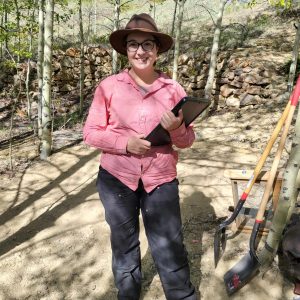
Name: Jade Luiz
Present Position: Assistant Professor of Archaeology, Metropolitan State University of Denver
Education: Ph.D., Historical Archaeology, Boston University; M.A., Historical Archaeology, Boston University; B.A., Anthropology, Portland State University
Professional Service to SHA and Other Societies: SHA: Workshop Coordinator for the Academic and Professional Training Committee
Other societies: Archaeological Institute of America, Denver chapter: Board Member and Secretary; MSU Denver Faculty Senate: Senator
Research Interests: Nineteenth-century sex work, archaeology of the senses, nineteenth-century urbanism, feminist archaeology
Biographical Statement:
I received my Ph.D. from Boston University where I specialized in nineteenth-century urbanism, gender, and archaeology of the senses. My research foci concern nineteenth-century sex work, with my dissertation work focusing on an archaeological collection from a brothel in Boston, Massachusetts. As a result of this research, I have contributed to several publications including a contributing volume to the series “Archaeology of Gender and Sexuality” titled Archaeology of a Nineteenth-century Brothel in Boston, MA: Erotic Facades. Since 2022, I have served as assistant professor of archaeology at Metropolitan State University of Denver. In June 2023, I developed a continuing archaeological field school for MSU Denver investigating the historic sex district of Central City, Colorado. This project is both a unique opportunity to investigate a sex district with remarkable preservation as well as train students in public archaeology and public engagement. Additionally, a significant goal of this field school is to increase the accessibility of field training and research to meet the diverse needs of MSU Denver students. Because of this work, this year I was awarded the Dean’s “Excellence in Research Award.” Prior to my position at MSU Denver, I also spent several years in collections management work in the museum industry, including two years as the Curator of Collections at Plimoth Patuxet Museums (formerly Plimoth Plantation) in Plymouth, Massachusetts.
Despite maintaining membership in several professional organizations, I consider the Society for Historical Archaeology my home and have been actively involved in the organization for the last 12 years. In graduate school, I held positions as the ethics liaison for the student sub-committee of the Academic and Professional Training committee where I developed the SHA’s version of the student Ethics Bowl. I later chaired that sub-committee. Following graduation, I continued to sit on other committees and took on a position as workshop coordinator for the APTC. I have been working this year to try and establish mid-year webinars for the SHA as part of that position.
Given the qualifications and experience outlined in your biographical statement, what do you believe you can contribute to SHA if elected?
As outlined in my biographical statement, I am dedicated to serving the SHA. This dedication, however, is not passive and manifests in a desire to help it continue to improve in the way it supports and collaborates with its membership and communities. If elected, I intend to contribute a strong student and young professional focus to the organization, continuing to assist in brainstorming and implementing programs and opportunities to grow and diversify professional historical archaeology. I have seen from my own students how quickly an environment like SHA can fire up a new generation and launch their own research and activism and I will work hard to make those experiences more accessible to a broader archaeological community. Additionally, I see potential for promoting increased collaboration with our colleagues in other disciplines, such as ethnography and sociology, to incorporate an expanded means of engaging with living communities that might be represented by our research and better understand their needs and expectations from archaeological inquiry.
If elected to serve SHA, what priorities would you emphasize?
If elected to serve as on the Board of Directors, my first priority would be the continued expansion of accessibility to the discipline of historical archaeology and the organization itself. I see this as instrumental to the organizations goals of Diversity, Equity, Inclusion, Belonging, and Mattering. I would emphasize methods for drawing more students to active membership in the SHA. The removal of systemic financial, social, and physical barriers to engagement would not only benefit students, but other individuals who may have felt traditionally excluded from the discipline and organization. Additionally, I would support and attempt to facilitate increased availability of professional training opportunities through the organization, again to provide greater access to materials that are needed for professionalization outside of traditional avenues.
Like many of my colleagues, I agree with the assessment that archaeologists have a responsibility to engage with their communities and do archaeology for their communities. Only by taking a proactive approach to community involvement and outreach can we have the potential for increasing public archaeological knowledge, combat dangerous misinformation and pseudoscience, and prevent the destruction of cultural heritage and archaeological sites. I would emphasize the development of public education programming and outreach projects as well as regular conversations with elected lawmakers who might making decisions on the fate of archaeological sites and preservation.
Please include a statement on your commitment to Diversity, Equity, Inclusion, Belonging, and Mattering (DEIB&M).
I strongly believe that archaeology is for everyone and that we as an organization should work tirelessly to make the SHA a space where all voices are heard and made to feel wanted and respected. In an interpretive field such as archaeology, our understanding of diverse experiences can only be truly possible if diverse experiences are included in conducting those interpretations. For that reason, I am dedicated to removing barriers and providing opportunities to make involvement in SHA and the field of archaeology more equitable. I am committed to listening to the needs of those who have traditionally been marginalized or disenfranchised within society at large and the field of archaeology in specific. In my professional engagement outside of the organization, I work to make opportunities available to the students and community members that I engage with, whether that be in finding funding opportunities for individuals experiencing financial insecurity so that they may for take part in course work or internships, or by trouble-shooting ways to make fieldwork more accessible to individuals with limited mobility or significant chronic health concerns. I support this same work within the organization of SHA as well. As an organization, I believe that SHA has been doing excellent work to move forward in the spirit of Diversity, Equity, Inclusion, Belonging, and Mattering; however, I also believe that there is no finish line for this project and that we as an organization (and as professionals) should continuously push forwards and find new ways to bring people in and make them feel that what they contribute matters to what we do as a discipline.
NOMINATIONS AND ELECTIONS COMMITTEE
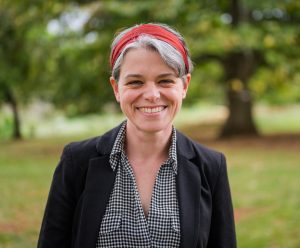
Name: Elizabeth (Beth) Bollwerk
Present Position: Project Manager for the Digital Archaeological Archive of Comparative Slavery (DAACS, www.daacs.org), Thomas Jefferson Foundation, Inc./Monticello
Education: Ph.D., Anthropology, University of Virginia, 2012; M.A., Anthropology, University of Virginia, 2007
Professional Service to SHA and Other Societies: SHA: Chair, Curation and Collections Committee, 2022–2024
Other societies: SAA: Member, Nominating Committee, 2020–2021; Member, Public Education Committee, 2014–2017; Taskforce Chair for the Public Webpages, 2014–2017; Member, Student Affairs Committee, 2009–2010; Museum Computer Network (mcn.edu): President, 2018–2019; Vice President, 2017–2018; Member, Board of Directors, 2015–2019; Member, Nominating Committee 2015, 2018, 2019
Research Interests: Social networks and communities of practice; Late Woodland and Historic period Southeastern United States; production and consumption of tobacco pipes and locally made ceramic; comparative/collections-based research; best practices for producing, using, sustaining, and stewarding archaeological data; community archaeology
Biographical Statement:
I am an anthropological archaeologist and a proponent of collections-based research with over 15 years of experience managing, curating, and researching collections in five different museum and university settings. I have worked as a research team member on the analysis of field records and archaeological assemblages from over 50 Woodland and Historic period archaeological sites distributed across the Southeastern United States and Caribbean. In my work I strive to enable scholars, students, practitioners, descendant communities, and the public to learn from the past by engaging with archaeological archives and materials. I also endeavor to help these groups create archaeological data with long term accessibility and sustainability in mind while respecting the expressed needs of descendant communities. My research explores how communities of Indigenous, enslaved African, and European producers and consumers negotiated and adapted to changing natural, social, and economic environments during the Colonial Period in the Southeastern United States by examining the material patterning of locally produced and imported smoking pipes and ceramic vessels.
Given the qualifications and experience outlined in your biographical statement, what do you believe you can contribute to SHA if elected?
If elected to SAA’s Nominating Committee, I will leverage the skills learned from my experiences serving on two prior Nominating Committees to ensure the nomination process identifies a pool of candidates who can represent the varied interests of SHA’s large and diverse membership. As a member of MCN’s Nominating Committee I worked with the organization’s Executive Director and Board to make our nominating process more efficient and transparent while documenting and addressing the challenges of increasing diversity in our Board’s candidate pool. As a member of SAA’s Nominating Committee, I worked with committee members to increase representation from historically marginalized communities in the candidate pool, reevaluate aspects of the criteria used for choosing candidates, and push for a shift to Ranked Choice Voting. If elected I would also draw on my connections with archaeologists from a variety of institutions (Academia, Federal and State agencies, Museums and Repositories, Tribal Historic Preservation Officers, CRM) and geographic regions to ensure the regional focus of the candidate pool is broad and represents all the types of archaeological institutions that are part of the discipline’s praxis.
If elected to serve SHA, what priorities would you emphasize?
See above
Please include a statement on your commitment to Diversity, Equity, Inclusion, Belonging, and Mattering (DEIB&M).
I am committed to creating environments where individuals feel valued, respected, supported, and empowered to share their perspectives and talents and learn from one another. I recognize the systemic barriers that have historically marginalized certain groups and strive to identify and dismantle those barriers in my professional work and personal life. I also work to ensure that everyone has fair access to opportunities and resources and can both contribute to and benefit professionally and personally from their membership in SHA.
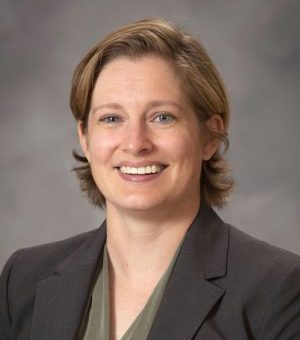
Name: Lindsey Cochran
Present Position: Assistant Professor, East Tennessee State University
Education: Post-doctoral Research Associate, University of Georgia, 2019–2021; Ph.D., Anthropology, University of Tennessee, Knoxville, 2014–2019; M.A., Anthropology/Historical Archaeology, University of West Florida, 2010–2013; B.S., Anthropology, University of Tennessee-Chattanooga, 2006–2010
Professional Service to SHA and Other Societies: SHA: Member, Heritage at Risk Committee, 2017–present; Southeast Archaeology Conference: Heritage at Risk Task Force Co-Chair, 2022–present
Other societies: Archaeology Advisory Council for Tennessee Governor Bill Lee: Member, present–30 June 2026; Tennessee Council for Professional Archaeologists: Member, Board of Directors, 2022–present; Society for Georgia Archaeology: Member, Board of Directors, 2020–present; North American Heritage at Risk Research Collaborative: Founding Member, 2020–present; Coastal Georgia Historical Society: Consulting Archaeologist, 2023–present
Research Interests: Historical archaeology of the Southeastern United States, spatial statistics and analytics, the impact of the climate emergency to archaeological method and theory, island and coastal plantation archaeology, the archaeology of the African diaspora, public outreach and community archaeology
Biographical Statement:
I am an anthropological archaeologist specializing in the historical archaeology of the coastal Southeastern United States and the impact of the climate emergency on cultural heritage sites. I serve as an Assistant Professor at East Tennessee State University in the Department of Sociology and Anthropology and as the Director of Valleybrook Archaeological Laboratories. In both of my roles, I am deeply committed to service, especially to underserved communities in Appalachia. I have been a member of SHA since 2011, where I gave my first professional paper in Baltimore, Maryland. While in my B.S., M.A., and Ph.D. programs, I worked in CRM in the Southeast to pay the bills, gain experience, and to ensure that I am not part of the problem re: academia vs. CRM. This eventually led to a formative internship and fellowship with the National Park Service in Natchitoches, Louisiana and Washington, DC where I created statistical models to estimate potential locations of cultural resources and to assess legacy data to determine if trends of climate change are observable in early site recordation files. My current research is focused on the antebellum and postbellum historical landscapes of the Georgia Sea Islands, and to that end I currently direct a project on Cumberland Island National Seashore that investigates the similarities and differences of the architecture, spatiality, access to goods and services, economies, and daily lives of both antebellum enslaved people and free people living under the constraints of the postbellum landscape. No coastal research is complete without climate impact assessments. I create spatial statistical models in GIS and R working with data from state site files to estimate the impact of sea level rise, wetland reallocation, sedimentation rates, and storm surge to known archaeological sites and areas likely to contain cultural heritage resources. I work with a variety of non-profits, state departments, and universities to help develop triage strategies to document, protect, and share information from these resources to descendants, local, public, and scientific communities.
Given the qualifications and experience outlined in your biographical statement, what do you believe you can contribute to SHA if elected?
My experience in academic, government, and CRM environments allows a more balanced approach to elections and nominations to highlight the work that is done in all areas of archaeology, not just in academia. My current partnership with the National Park Service highlights the necessity for collaboration, especially with looming shoreline degradation and shifting in field practices that accommodate difficult weather patterns because of the climate emergency. Our partnership takes advantage of the inherent strengths of SEAC NPS, and the strengths of an undergraduate field school to excavate and record a site too often passed by in the literature. Working on the Sea Islands takes many months of logistical preparation and the skills I have developed in planning, communication, collaboration, and flexibility will help to enhance the committee.
If elected to serve SHA, what priorities would you emphasize?
If elected to the elections and nominations committee, I can promote values outlined in the SHA DEIB&M to balance opportunities and accolades given to people in prestigious academic settings, non-profits, governmental work, and CRM. As the fields of archaeology and anthropology grow and continue to separate ourselves from our dark history, it is critical to continue trending away from classic patterns of reward and highlight the people and groups that are truly excelling, not simply those that are the most visible. Many people do excellent work on smaller scales, in settings that may have less funding and time for marketing, and oftentimes these are the people and networks of practice that have the biggest impact to communities by making history and archaeology accessible.
I strongly believe that archaeology and anthropology are disciplines of service: to do due diligence to contextualize a fuller and more accurate narrative of people in the past, to foster empathetic, accurate, and balanced interpretations of the past for people today, and to future-proof our data and world by actively prioritizing the documentation and preservation of heritage at risk, not for ourselves but for others.
Please include a statement on your commitment to Diversity, Equity, Inclusion, Belonging, and Mattering (DEIB&M).
I believe that the role of historical archaeology is to illustrate and contextualize the economic, political, and racial tensions of today by building a synthetic scaffolding to the past. Few of us were taught an accurate history in school and as a result, the reality of our past must be articulated in everyday culture. I am a blue eyed, blonde-haired white woman. My role is to tell people who look like me that racism and slavery were bad; climate change is real; and that education is not scary but a necessary part of personal and societal growth and stability. I work to communicate in my words and writing in an accurate, accessible manner that eliminates jargon. I believe that my work should be transparent to a broad base. I try to use my unearned privilege to work to create space for people to research, discuss, and promote what is important to them, foster connections between communities, and listen to the wants and needs of descendant communities (in my work, this is particularly people who are Gullah Geechee). Archaeology is not necessary—if a descendant community does not want to know about one of the darkest points in their history, it is imperative to listen, stop work, and see what the community wants. I sincerely believe that archaeology has a place in approaching balanced histories, but that archaeology is not for myself but for others.
COMMUNICATIONS EDITOR
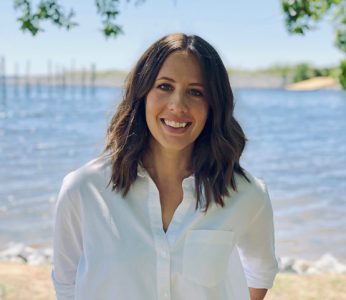
Name: Nicole Bucchino Grinnan
Present Position: Assistant Director, University of West Florida Archaeology Institute
Education: Ph.D. (in progress), History, University of St Andrews; M.A., Historical Archaeology/Anthropology, University of West Florida, 2014; B.A., Anthropology, University of Central Florida, 2010; B.A., History, University of Central Florida, 2010
Professional Service to SHA and Other Societies: SHA: Conference Committee, SHA New Orleans 2025; Website Editor, 2023–present; Member, Board of Directors, 2019–2022; Member, Nominations Committee, 2022–2024; Member, Jamie Chad Brandon Student Paper Prize Committee, 2023–present; Member, Academic and Professional Training Committee, 2019–present; Member, Heritage at Risk Committee, 2018–present
Other societies: Advisory Council on Underwater Archaeology (ACUA) Graduate Student Representative, 2012–2017; Member, Academic and Professional Training Committee Student Subcommittee, 2012–2014; Co-Facilitator, ACUA “Underwater Cultural Awareness Workshop,” 2012–2015; Member, 2010–present; American Academy of Underwater Sciences (AAUS): Member, Board of Directors and Membership Chair, 2020–present; Host, Annual Diving for Science Symposium, 2023; Scholarship Reviewer, 2020–present; Member, 2012–present; Florida Archaeological Council: Web Editor, 2019–2022; Membership Secretary, 2015–2019
Research Interests: Maritime archaeology, coastal archaeology, public archaeology, social history, archaeological/historical ecology, cultural resource interpretation, accessibility and archaeology
Biographical Statement:
When I began my graduate career, the Society for Historical Archaeology had an important influence on me. I have attended the annual meeting each year since 2010 and am thrilled to be involved with the SHA at a variety of levels. I currently work as the Assistant Director of the University of West Florida’s Archaeology Institute, a research and service facility that conducts archaeology throughout northwest Florida. The Institute also plays a critical role in providing educational support to the university’s Anthropology Department and its students. Prior to joining the UWF Archaeology Institute, I worked for over a decade as a Faculty Research Associate for the Florida Public Archaeology Network (FPAN). One of the most unique aspects of my professional experience has been the ability to collaborate with local, state, and federal organizations for multiscalar public education and outreach projects.
Working with a variety of partners has also provided a broad array of experiences, shaping a personal approach to archaeology that is intrinsically transdisciplinary. My academic background has always relied on varied methodologies to answering research questions; I am thus a strong proponent of an archaeology informed not only by history, but also by environmental studies, geography, political science, and sociology. Drawing on this approach, my graduate and post-graduate research has focused on maritime communities and how they are situated within a broader historical, social, and ecological landscape. I have had the opportunity to work on a variety of projects along the Atlantic coast of the United States, with more recent emphasis on Florida’s Gulf of Mexico coast as I undertake my doctoral research within the Apalachicola National Estuarine Research Reserve.
Given the qualifications and experience outlined in your biographical statement, what do you believe you can contribute to SHA if elected?
Of the many contributions I believe that I can bring to the SHA as Research Editor, I am confident that my extensive experience in public education, outreach, and science interpretation would be critical. Although archaeology has made great strides in bridging the gap between the academic discipline and the communities it serves, there is still a great deal to do. International organizations like the SHA play a crucial role in energizing and guiding outreach efforts, creating a unified imperative for archaeologists at all levels.
I recognize the importance of archaeology and its profound impact on communities and individuals. Now, more than ever, it is essential to engage the public and our legislators to protect the cultural resources we study and the stories they reveal. One of the most exciting areas of public engagement that I have been exploring is enhanced accessibility through interactive digital media. These efforts offer new opportunities to bring archaeology to all communities, including politicians, developers, and community managers. My work in these areas can provide valuable insights and practical experience to the Society, and I am eager to guide new projects to advance these efforts.
Additionally, with experience as the Society’s Website Editor, I bring a diverse set of practical skills to the SHA. With a great deal of practical background in graphic design, social media engagement, organizational branding, and writing for public audiences, I know that I can continue to create memorable impacts on the Society and assist it with its ongoing mission of advocating for cultural resources above and below the water.
If elected to serve SHA, what priorities would you emphasize?
With a history of over 50 years, the Society for Historical Archaeology has made a tremendous impression on archaeology and raised the international visibility of historical archaeology. In recent years, however, we have seen threats to the SHA’s mission through attacks on legal frameworks protecting archaeology and the sharing of difficult histories at the federal and state levels. We are also contending with the enormity of cultural heritage loss as a result of the many facets of the climate crisis. If elected as Research Editor, I would place significant priority on two things. First, the SHA should continue to improve its efforts to carry out conversations with those outside of our discipline: the public, our legislators, and the media. To do this, we need to understand how to be relatable, create connections, and be impactful. I continue to believe that this begins with SHA’s digital presence. Second, and toward a similar end, the SHA should accelerate efforts to encourage and facilitate dialogue among its members. As someone with research interests that draw from multiple disciplines, I recognize the significance of exchange and access to information.
Although specialization in archaeology is necessary, it is also critical to reach across boundaries to create a unified voice that is both motivating and relevant for those outside of the discipline. Ultimately, fostering connections within the Society through workshops, panels, symposia, special events, and media beyond the annual meeting will build our momentum into the future.
Please include a statement on your commitment to Diversity, Equity, Inclusion, Belonging, and Mattering (DEIB&M).
Fostering a culture of diversity, equity, inclusion, belonging, and mattering (DEIB&M) within the SHA and the broader archaeological community is essential for the survival of the discipline. If the work we do and the research we undertake is not representative or inclusive of the people we live alongside, that work will cease to be supported. A point of pride for our Society should be that so many members and their organizations have been making incredible advances toward this imperative.
I see that my commitment to DEIB&M is reflected in my work to bridge the gap between archaeology and communities, efforts that include co-founding and chairing the first Conference on Public Archaeology in September 2023 to highlight the need for critical dialogue among public-minded archaeologists and cultural heritage practitioners; engaging underserved coastal communities in northwest Florida to prioritize cultural heritage preservation efforts within the co-managed land areas of the Apalachicola National Estuarine Research Reserve; and advocating for accessibility in underwater archaeology through publications with colleagues that represent distinctive professional and avocational perspectives.
International organizations like the SHA play a crucial role in guiding outreach efforts. By continuing to promote inclusive practices and foster conversations, I aim to contribute to a more equitable and impactful archaeological practice within the SHA and beyond.
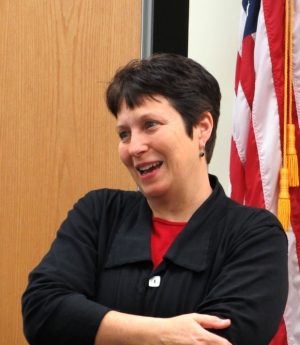
Name: Patricia Samford
Present Position: Director, Maryland Archaeological Conservation Laboratory
Education:Ph.D., Anthropology, University of North Carolina, Chapel Hill; M.A., Anthropology, College of William and Mary; B.S., Anthropology and Psychology, College of William and Mary
Professional Service to SHA and Other Societies: SHA: Newsletter Editor, 2019–present; Member, Board of Directors, 2015–2017; Member, Kathleen Kirk Gilmore Dissertation Committee; Member, SHA Scholarship Awards Committee; SHA Representative, Steering Committee of 50th Anniversary of the National Historic Preservation Act; Member, PEIC Committee
Other societies: Council for Northeast Historical Archaeology: Board Member, 2010–2020; Member, Committee on Collaborative Preservation; Council for Virginia Archaeology: Newsletter Editor
Research Interests:English ceramics, archaeology of colonial and 19th-century North America with an emphasis in African-American archaeology, public archaeology, gender, West Africa, identity formation
Biographical Statement:
For over 30 years, I have conducted archaeological research in the Mid-Atlantic region of the United States, working at the Colonial Williamsburg Foundation, North Carolina State Historic Sites and the Maryland Historical Trust. Currently, I am the Director of the Maryland Archaeological Conservation Laboratory, the state’s archaeological research, curation and conservation facility.
Given the qualifications and experience outlined in your biographical statement, what do you believe you can contribute to SHA if elected?
The newsletter is a significant resource in keeping members up to date with new research, funding opportunities, recent legislation affecting our profession and relevant conferences. In an effort to be more inclusive to non-English speaking scholars worldwide, in 2021 we began including French and Spanish abstracts of research contributions.
After working over 30 years as a historical archaeologist in museum, academic and cultural resource management settings, I have gained an understanding of the challenges faced by the diverse venues in which we practice our profession. As a director of various institutions, working with staff, board members, non-staff professionals, and the public, I have developed management skills that will help me take into account the varied interests of SHA membership when making decisions as a board member. I feel that increased public outreach within our profession is extremely important, particularly in the current political and economic climate where the humanities are under constant attack. As director of the Maryland Archaeological Conservation Lab, I have made it a priority to expand access to collections, both through online research and artifact identification tools such as Diagnostic Artifacts in Maryland, Maryland Archeobotany and Archaeological Collections in Maryland, and through the development of online finding aids, such as Maryland Unearthed, to the collections curated there. Educational outreach to the public in the forms of traveling exhibits, educational modules, engaging with public schools and publications have also been a priority throughout my career. These experiences will be beneficial to my participation as a board member.
If elected to serve SHA, what priorities would you emphasize?
If elected as Communications Editor, I would continue to expand the content coverage of the newsletter beyond the continental United States. While the newsletter remains an important vehicle for communicating with the membership, I also recognize that communication modes have multiplied over the last decade, reaching and appealing to different demographics. I would prioritize working with the website editor and social media liaisons to facilitate creating relevant content for a variety of professional audiences. As a member of the larger SHA Board, I would prioritize assisting the organization in working to address member needs and concerns, particularly as they relate to the current political and social climate. Additionally, because much of my career has been spent in museums, I am committed to working with diverse audiences in engaging the public with archaeology. As such, I am concerned with the challenges of making archaeology accessible and interesting to the public without compromising our ethical standards of site protection and integrity. I am committed to furthering the accessibility of archaeological data and research resources through web-based media.
Please include a statement on your commitment to Diversity, Equity, Inclusion, Belonging, and Mattering (DEIB&M).
I am committed in my personal and professional life to ensuring that all individuals, regardless of cultural heritage, ethnicity, gender, gender identity, sexual orientation, and disability, receive respect and equal treatment. Equity, Diversity, and Inclusion and Belonging efforts are critical to the continued success of archaeology as a discipline and I support efforts within our organization that foster open dialogue, respect and understanding. I believe that it is important for the makeup of the SHA Board and the Society’s committees to reflect the diversity within our organization and will work to make this a reality.
ACUA BOARD OF DIRECTORS
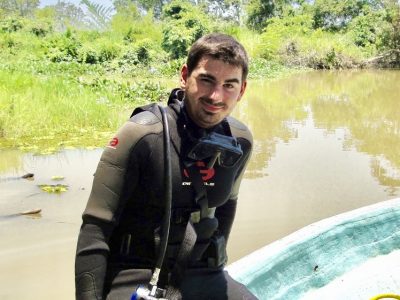
Name: Jeffrey Delsescaux
Present Position: Associate State Archaeologist, California State Parks
Education:M.A., Anthropology (Archaeology Option), California State University, Los Angeles, 2015; B.A., Anthropology, California State University, Fullerton, 2009
Professional Service to SHA and Other Societies: Society of California Archaeology: Member, Maritime Archaeology Committee; Sonoma Coast Historic and Undersea Nautical Research Society (SCHUNRS): Board Member
Research Interests: Maritime archaeology, shipwrecks, California, underwater archaeology, maritime cultural landscapes
Biographical Statement:
I am honored to submit my candidacy for a position on the board of directors of the ACUA. As a curious high school student in Los Angeles, California, my fascination with underwater archaeology was ignited when I stumbled upon Clive Cussler’s The Sea Hunters among my dad’s collection of Clive Cussler novels. Immersed in the adventures of Dirk Pitt and captivated by tales of underwater exploration, I embarked on my own quest: to uncover the World War I German U-boat off the coast of Los Angeles, the UB-88.
While my search did not lead me to the U-boat, it opened doors to a transformative journey. Through this endeavor, I had the privilege of crossing paths with a few of California’s underwater archaeologists, who generously offered their mentorship. They imparted upon me a profound understanding: that archaeology is not solely about uncovering artifacts, but delving into the stories they hold—the ‘why’ behind their existence, shedding light on the lives and behaviors of those who came before us.
Inspired by their guidance, I dedicated myself to pursuing a degree in anthropology, immersing myself in various underwater projects along the way. I remain deeply indebted to those who have shared their wisdom and experiences with me throughout my career. For those of us in the field, underwater archaeology transcends mere profession—it’s a lifelong passion. Despite the allure of other paths, the thrill of discovery and the pursuit of understanding continue to drive us forward, compelling us to seek answers to that timeless question: “Why?”
Given the qualifications and experience outlined in your biographical statement, what do you believe you can contribute to the ACUA if elected?
Given my qualifications and experience, I believe I can contribute several things to the ACUA/SHA if elected. Firstly, my tenure at the California Office of Historic Preservation, I worked closely with the California State Historic Preservation Officer (SHPO) as a reviewer for underwater projects. This experience has given me invaluable insights into the complexities and regulatory challenges inherited in our field. This experience has improved my ability to collaborate effectively with diverse teams and stakeholders, ensuring projects consider their effects on underwater cultural heritage.
Moreover, California’s maritime archaeology is experiencing a transformative phase of growth and awareness, a journey I am privilege to witness through my involvement in California State Parks’ Maritime Heritage Program and serving in the Society for California Archaeology’s Maritime Archaeology Committee. These roles have given me the confidence to contribute meaningfully to the leadership and decision-making processes of the ACUA/SHA, ensuring that our initiatives are grounded in best practices and guided by a clear vision for the future.
My experience at California State Parks has also given me a better understanding of the issues at hand, from regulatory considerations to practical management strategies. I am passionate about using this knowledge to advocate for the preservation and responsible stewardship of underwater cultural heritage and ensuring that it continues to enrich our collective heritage for generations to come.
Overall, I am confident that my combination of qualifications, experience, and skills positions me well to make a positive and lasting impact on the ACUA/SHA if given the opportunity to serve in an elected capacity.
If elected, what priorities would you emphasize, taking into consideration ACUA missions and goals, ongoing committee activities, and the management and financial challenges of the organization?
If elected, my foremost priority would be to ensure our actions are fully aligned with the core missions and goals of both the ACUA and SHA. Central to this commitment is the expansion of efforts to promote interpretation and facilitating learning opportunities about underwater archaeology for the wider public. This endeavor not only advances our shared goals of upholding the highest ethical and professional standards in underwater and maritime archaeology but also addresses a critical challenge facing our field: the need to foster diversity and inclusion as we chart our course for the future.
An undeniable obstacle confronting underwater archaeology, both locally in California and on a global scale, is the prevailing misperception among the general public. Far too often, activities like treasure hunting and illicit looting are perceived as acceptable by the public and pose a direct threat to our underwater cultural heritage. Television documentaries and films often romanticize treasure hunters and looters, reinforcing a damaging stereotype. This portrayal obscures the vital work of underwater archaeologists and the importance of preserving the context. Without a true understanding of archaeology’s aims and the significance of context, the public underestimates the destructive impacts of such actions on our irreplaceable heritage. As custodians of this invaluable heritage, it is incumbent upon us to advocate for responsible practices and to educate the public about the imperative of preservation.
In California, we have been increasing our efforts to uphold another crucial objective of the ACUA: advising and encouraging individuals, organizations, and government bodies to adhere to professional archaeological standards in the investigation, protection, and management of underwater cultural heritage. One powerful tool in this endeavor is the Annex to the 2001 UNESCO Convention on the Protection of the Underwater Cultural Heritage, which offers comprehensive guidelines for best practices. I am firmly of the belief that this framework should be more widely embraced, particularly by non-profit advocacy groups and government agencies at all levels. Such adaptation not only echoes the objectives of the ACUA but is essential for the responsible stewardship of our underwater cultural heritage.
Please include a statement on your commitment to Diversity, Equity, Inclusion, Belonging, and Mattering (DEIB&M).
As a new archaeologist at the California Department of Transportation (Caltrans), I was entrusted with the role of District Native American Coordinator (DNAC), overseeing our district’s Native American consultation efforts. My academic background predominantly focused on underwater archaeology, and this assignment pushed me into an entirely new domain. I remain profoundly grateful to the indigenous community for their patience and for sharing invaluable insights into the essence of their identity and way of life.
Their guidance not only illuminated the importance of incorporating indigenous perspectives within the regulatory framework but also underscored the ethical imperative of doing so. This experience served as a powerful reminder of the necessity to transcend boundaries and engage meaningfully with diverse stakeholders, each offering unique insights and experiences.
I have come to recognize diversity, equity, inclusion, and belonging as foundational principles in archaeological interpretation. Embracing these principles not only enriches our understanding of the past but also facilities healing and reconciliation, forging connections that transcend historical divides.
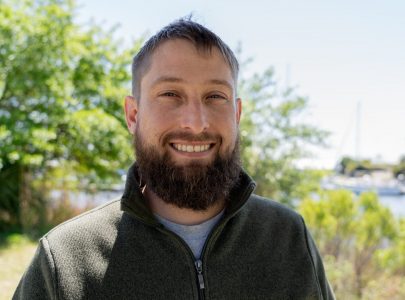
Name: Joseph Grinnan
Present Position: Underwater Archaeology Program Manager, AECOM
Education: M.A., Historical Archaeology, University of West Florida, 2013; B.A., Anthropology/minor in Zoology, University of Florida, 2009
Professional Service to SHA and Other Societies: Since attending my first SHA conference in 2010, I have volunteered as a co-lecturer for the ACUA’s Submerged Cultural Heritage Workshop, served as a volunteer judge for the Ethics Bowl, and participated as a panelist on several conference discussion panels. Outside of SHA, I have served on the Statistics, Standards, and Scholarship committees for the American Academy of Underwater Sciences (AAUS).
Research Interests: Maritime cultural landscapes, underwater remote-sensing technologies, scientific diver safety
Biographical Statement:
Joe Grinnan, M.A., RPA, has over a decade of professional archaeological experience. As the Underwater Archaeology Program Manager at AECOM, Joe is responsible for overseeing and conducting submerged remote-sensing survey, diver identification, and data recovery projects. He has over 15 years of professional diving experience, holds a Master Scuba Diver Training rating through Professional Association of Diving Instructors (PADI) and is a Scientific Diving Instructor through American Academy of Underwater Sciences (AAUS). He earned his Master’s degree in Historical Archaeology from the University of West Florida (2013) and his Bachelor’s degree from the University of Florida (2009). Joe has worked across the southeastern and northeastern United States and internationally in places such as Palau, Papua New Guinea, Yap, and Ghana. His experience includes the discovery and recovery of sixteenth-, seventeenth-, eighteenth-, and nineteenth-century vessels and numerous aircraft. Joe is certified as a CPR/First Aid Instructor, an Oxygen First Aid for SCUBA Diving Injuries Instructor, and as a worker in offshore environments; he is listed on the Register of Professional Archaeologists (RPA). Joe is also a proud Eagle Scout.
Given your qualifications and experience, what do you believe you can contribute to the ACUA/SHA if elected?
As a professional, I have built relationships with a wide variety of groups, including private, non-profit, state, and federal agencies both within the archaeological and broader scientific communities. Daily, I collaborate with my scientific colleagues and work to ensure personnel safety, while satisfying the various regulations and statutes associated with cultural resources management, all under a strict budget. I believe my experience as a professional working in the private sector provides me with a skillset that I could bring to the board to assist with fulfilling ACUA’s mission and purpose.
If elected, what priorities would you emphasize, taking into consideration the ACUA and SHA missions and goals, ongoing committee activities, and the management and financial challenges of the society?
The ACUA is comprised of top scholars in and practitioners of underwater archaeology from diverse international organizations and agencies. I would have the ACUA coalesce this knowledge to advocate for methodological best practices by either endorsing already established guidelines or portions thereof, or by developing their own. For instance, many state and national agencies either do not have established guidelines or have outdated guidelines for conducting a Phase I underwater remote-sensing survey. In line with ACUA’s mission statement, one way to promote best practices for underwater cultural heritage would be to update the Council’s virtual resource on Laws, Issues, Developments & Ethics for Underwater Cultural Heritage.
ACUA’s Submerged Cultural Heritage Workshop, a critical workshop at each SHA conference, introduces terrestrial archaeologists to the principles and practices of underwater archaeology. This workshop is a fantastic, if under-utilized, resource for terrestrial colleagues who find themselves in a management role for underwater and maritime resources. I will be a strong advocate for greater participation in this training opportunity. In being one of the few organizations to delve into topics like methodology, legal frameworks, conservation requirements, ethics, and more as they relate specifically to submerged resources, the ACUA has done an excellent job of championing our discipline and setting itself up as a leader in professional training.
Please include a statement on your commitment to Diversity, Equity, Inclusion, Belonging, and Mattering (DEIB&M).
As maritime archaeologists, our greatest tool in understanding the past is a consideration of the tremendous spectrum of individual and cultural experiences. That recognition should not stop with the past: we also live and work today in a world that reflects this diversity. Some of the finest and most intentional scholarship to which I have contributed has been the result of broad collaborations with people representing different backgrounds, stories, and perspectives. In every instance, these collaborations have engendered deeply creative approaches and produced effective, inclusive outcomes.
During my involvement in the search for Clotilda in Mobile, Alabama, I had the opportunity to play a small role in a large-scale project involving private and public sector employees; a wide array of professionals, including archaeologists, biologists, environmental scientists, geneticists, and museum specialists; professional and avocational archaeologists; and individuals from multiple ethnic backgrounds and lifestyles. The project had a large archaeological component, but what I enjoyed and learned from the most from was spending time with the Africatown community. Not only did I have the opportunity to help communicate our findings, but I also had the honor of hearing what our work meant to that community.
To me, the concepts of belonging and mattering begin with diversity, equity, and inclusion. They should, however, go one step farther. Having or being a part a group with diverse team members is insufficient. In order to develop an engaged and successful team, it is important that those in our discipline should extend a sense of belonging and mattering within our networks and in our communities. By taking time to listen, by modeling inclusive behaviors, and by leaving space for others to participate, we can ensure that these qualities become an essential part of our work. While I recognize that I can always do better, I strive in my career and daily life to fully engage with and foster a sense of belonging and mattering. If elected to the ACUA Board, I will endeavor to carry these beliefs and actions to all aspects of my involvement.
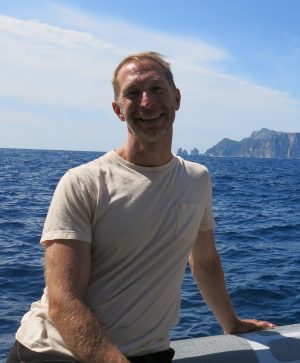
Name: Matthew Harpster
Present Position: Assistant Professor, Department of Archaeology and History of Art, Koç University; Director of KUDAR, Koç University Mustafa V. Koç Maritime Archaeology Research Center
Education: B.A., Classical Archaeology and Anthropology, George Washington University, 1994; M.Phil., Maritime Studies, St Andrews University, 1997; Ph.D., Anthropology with a specialty in Nautical Archaeology, Texas A&M University, 1997
Professional Service to SHA and Other Societies: SHA: Member, 2024–present
Other societies: Archaeological Institute of America: Chair, Maritime Archaeology Interest Group, 2017–2023
Research Interests: Maritime cultural landscapes, cross disciplinary programs between maritime archaeology and other social and applied sciences, intellectual history of maritime archaeology
Biographical Statement:
After completing his Ph.D. in Anthropology with a specialty in Nautical Archaeology at Texas A&M University in 2005, Matthew Harpster spent a year at the Dibner Institute for the History of Science and Technology (MIT), before moving to Famagusta, Cyprus. In addition to his first academic post at Eastern Mediterranean University, Cyprus was also a seven-year immersion in the dynamics of archaeology, nationalism, identity, law, and UNESCO Conventions, due to its ongoing political stalemate. In addition to completing the first series of international archaeological surveys off the island’s north coast since 1974, he was also the Director of the Kyrenia Shipwreck Collection Restoration Programme, an effort to revitalize the ongoing curation and display of the 4th-century B.C. ship excavated in 1968 and 1969. This museum project earned endorsements from UNESCO, the Australian High Commission, and the U.S. Embassy, and was awarded funds from the European Commission and the Honor Frost Foundation.
In 2013, he was awarded a Marie Curie Fellowship from the European Commission to research at the University of Birmingham, England. During those two years, he participated in maritime field surveys in Morocco, and began his ongoing study of the maritime cultural landscape of the Amalfi costiera. Since starting at Koç University, Istanbul, in 2016, he has conducted additional coastal and underwater fieldwork in Iran and Turkey, and has been the Director of KUDAR, the Koç University Mustafa V. Koç Maritime Archaeology Research Center. KUDAR was elected an associate member of the UNESCO UniTwin Network for Underwater Archaeology in 2021, offers funded M.A. and Ph.D. degrees focusing on maritime topics, and has international collaborations with the Universities of Copenhagen, Edinburgh, and Oldenburg, the German Archaeological Institute, the French Institute of Anatolian Studies, and the Swedish Research Institute in Istanbul.
Given your qualifications and experience, what do you believe you can contribute to the ACUA/SHA if elected?
If elected I believe I can contribute a diversity of perspectives on maritime archaeology and maritime cultural heritage management practices in the eastern Mediterranean—experience that can help the SHA and the ACUA pursue the international elements of their mission and vision. As a region that is adjacent to the European Union, public and private sector practitioners in maritime archaeology and maritime cultural heritage management are often caught between the expectations emanating from institutions to the west, and the practical applications of those standards at the local level. This disjunction can manifest itself in a variety of ways. It may be a clash between local values and neoliberal emphases on heritage, a distrust of foreign experts emanating from 20th-century colonialist activities, or the practical realities of enacting and maintaining projects in the midst of political and economic instabilities. I am not suggesting that I have solutions, but I can contribute a network of colleagues and years of experience operating in environments in which the everyday application of UNESCO and EU priorities are not as straightforward as they may be in other environments.
If elected, what priorities would you emphasize, taking into consideration the ACUA and SHA missions and goals, ongoing committee activities, and the management and financial challenges of the society?
The priorities of the ACUA and the SHA that engage me the most are those related to their international interests: acting as an international advisory body, and advocating for a global perspective in the study and protection of underwater cultural resources. I would prioritize these foci during my tenure on the Board of Directors due to my past experience with public outreach and education on Cyprus, my present role representing KUDAR in the UNESCO UniTwin Network for Underwater Archaeology, and my interest in outreach and policy. To me, the next major challenge for many international management mechanisms and programmes—such as the UNESCO 2001 Convention—is not only acknowledging their ‘Western’ priorities and rubric, but perhaps changing, adapting, or overcoming those foundations to encourage their increased adoption worldwide. Does this require increased co-design (or re-design?) with local communities to prioritize their interests? Perhaps more and broader exchange opportunities for educators and students, and/or expanding and diversifying the actors creating and amending the mechanisms themselves. To me, the SHA and the ACUA, with their education and UNESCO committees, are forums in which I could engage and implement these priorities, furthering the mission of both organizations.
Please include a statement on your commitment to Diversity, Equity, Inclusion, Belonging, and Mattering (DEIB&M).
Due to military incursions on Cyprus in 1974 and the presence of the Turkish military in the northern 38 percent of the island since, Cyprus has been politically divided for almost five decades. This division has excluded the northern Turkish-speaking community from numerous training and educational opportunities, establishing broad inequalities in archaeological, management, and curatorial skillsets across the island and within the region. In addition to my efforts within the university environment to counter these longstanding trends, I also collaborated with the Nautical Archaeology Society (NAS) of Great Britain to establish a bi-communal, custom version of their certified training scheme suitable for the island’s needs. Operating between 2007 and 2010, six individuals and nine businesses across the island earned this specialized certification. This programme not only fostered more equity and inclusion across the disputed border, it also promoted a sense of mattering among the Turkish-speaking participants who embraced their role as stewards of the island’s maritime cultural heritage.
More recently, as Director of KUDAR, we adapted the University’s guidelines and established a sexual harassment policy for the center’s research and field projects. This was necessary because our work occurs outside the campus’ administrative infrastructure, with small teams in potentially remote environments, and this is the first harassment policy for field research projects within the Department of Archaeology and History of Art. By sharing the policy among all participants, empowering those targeted, and publicizing both the damaging impacts of aggressive and unwanted behavior as well as the need to counter those actions, this policy also promotes equity, inclusion, belonging, and mattering among all members of our team.
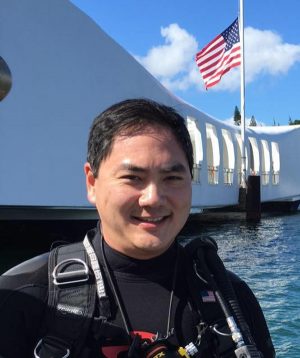
Name: Bert Ho
Present Position: Maritime Archaeologist, Pacific Region Federal Preservation Officer, Bureau of Ocean Energy Management (BOEM)
Education: M.A., Anthropology, Florida State University, 2004; B.A., Anthropology, University of Tennessee, Knoxville, 2001
Professional Service to the SHA/ACUA and Other Societies: SHA: Underwater Program Chair, SHA 2024, Oakland, CA
Other societies: ACUA: Co-Editor, Underwater Proceedings, 2023, 2024; Board Member 2021–2024; Secretary, 2023–present; Chair, Mentoring Committee, 2024–present
Research Interests: Underwater archaeology, marine remote sensing, emerging technology
Biographical Statement:
Bert has over 20 years of experience as a federal employee working in the field of underwater archaeology, regulatory, and marine science. After completing his Masters in 2004 at Florida State University, he joined the National Oceanic Atmospheric Administration’s (NOAA) Office of Coast Survey, conducting numerous marine surveys for nautical chart updates, post-natural disaster responses, and for archaeology. He then moved on to the National Park Service’ Submerged Resources Center as an underwater archaeologist supporting Parks with their various needs for cultural resource management and major facility improvements. In 2018, he made the move to California to become a regulator with the U.S. Army Corps of Engineers San Francisco district. He applied his NHPA Section 106 experience to the permitting review process, while developing his NEPA, ESA Section 7, EFH, and Tribal consultation skills. He then returned to the NPS as the resource manager at San Francisco Maritime National Historical Park, where he led the division responsible for the largest museum collection in the entire Department of Interior. He also led compliance reviews and ended his time at the park with a brief detail as the Park’s Superintendent. His role now at the Pacific Region of the BOEM is as a marine archaeologist and Regional Federal Preservation Officer responsible for all Section 106 consultations. He works closely with the Region’s Tribal Liaison, regularly consulting with Tribes on potential impacts from the development of offshore energy to historic properties, Tribal resources, and cultural landscapes both submerged and exposed. He is currently serving on the ACUA board in his first term and is the current Secretary.
Given the qualifications and experience outlined in your biographical statement, what do you believe you can contribute to ACUA/SHA if elected?
If re-elected to the ACUA, I will continue to contribute a unique professional and personal perspective. With two decades of work in the field of underwater archaeology across four U.S. federal agencies, I bring a strong understanding of federal processes as they relate to the preservation and protection of underwater cultural heritage. I want to continue sharing my approach on how we are protecting these resources at the federal level, whether they are historic properties, archaeological resources, Traditional Cultural Places, or cultural landscapes. My contribution also includes elevating the concerns of Tribal and Indigenous communities to our international ACUA board and SHA, in hopes we can lead the field of underwater archaeology towards greater inclusivity. This is where my personal perspective intersects with my professional. I want to continue pushing ACUA to become more diverse in perspectives through the inclusion of our colleagues from areas of the world where we have historically lacked representation. I am working on that now in ACUA, and I strongly believe that is the most important contribution I can make to ACUA.
If elected, what priorities would you emphasize, taking into consideration the ACUA and SHA missions and goals, ongoing committee activities, and the management and financial challenges of the society?
SHA’s opening sentence of their mission statement mentions being an advocate “for a global perspective,” and the first goal in their list of Strategic Plan Goals is to expand membership. These are both points of emphasis for ACUA and priorities that I hope to continue working towards if re-elected. I want to continue our inclusion of international underwater archaeologists and strengthen our connections to other NGOs.
Another way to reach these priorities is to continue the ACUA mentoring program. I will for the first time this year lead the ACUA mentoring committee and hope to provide some guidance to expand the mentoring to be SHA-wide. We need to be better in how we include students and young professionals at SHA conferences and keep them connected if we hope to expand membership. This will be my priority over the next term if re-elected.
Please include a statement on your commitment to Diversity, Equity, Inclusion, Belonging, and Mattering (DEIB&M).
The easy answer from my experience is consistently work to be present, be welcoming, and be responsive to people that are different than me and have difference perspectives. As a person of color, I know how unwelcoming it can be to walk into a SHA conference for the first time (in Mobile, AL) and not see anyone that even remotely looks like you. Sadly, that hasn’t changed much in the last couple decades of attending SHA and being a member. That motivates me to work harder at enhancing diversity and being vocal about it.
In my career, I have sought out the organizations to support Asian Americans like the various employee resource groups within federal agencies. Through these groups, we can feel belonging and form relationships that are supportive of our culture and worldview. We also have the opportunity to see and speak with people from the AAPI community that are in positions of power or authority, and that has influenced me in how I involve myself in SHA and ACUA. I know that I have a responsibility to speak out and at times, serve as a token example of diversity often as a conference panelist, as I have multiple times for ACUA and other organizations discussing diversity, equity, and inclusion. However, to actually enhance DEI, belonging, and mattering, I need to act when given the opportunity. One way I am working towards that in ACUA is to make space within our non-elected Associate Members for colleagues in other parts of the world. We need to broaden our perspectives and that starts by broadening our representation. If we need to adjust our bylaws to make more space then that is part of the work we need to do. I believe progress is being made, but we are far from where we want to be in ACUA and SHA. My desire to step in and lead the ACUA Mentoring Committee is another example of how I am leaning in to make change. I can be vocal, and I can call out injustices when I see or experience them, but at some point, I know I need to step in and lead on issues of DEI. For me, there is no greater motivation for change than to see the exact same exclusions and inequity I experienced 20 years ago continue in an organization and impact our younger colleagues today. I will change that through our mentoring program in ACUA and through some of the plans to broaden the impact.
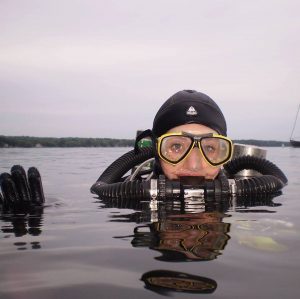
Name: Caitlin Zant
Present Position: Research Coordinator and Science Communications Specialist, Wisconsin Shipwreck Coast National Marine Sanctuary
Education: M.A., Maritime Studies, East Carolina University; B.A., History and Geography, Carthage College
Professional Service to SHA and Other Societies: SHA: Member, 2013–present
Other societies: Board Member, 2021–present; Register of Professional Archaeologists: 2015–present; Wisconsin Underwater Archaeology Association: Vice President, 2016–2021; Wisconsin’s Underwater Heritage (journal), Editor, 2019–present
Research Interests: Transport, trade, and maritime landscapes of the Great Lakes region; use of 3D imagery to track change and degradation of submerged sites; management of maritime cultural resources; remote sensing data collection and interpretation; citizen science and public archaeology
Biographical Statement:
I have been Research Coordinator with NOAA’s Wisconsin Shipwreck Coast National Marine Sanctuary since late 2022, working to provide stewardship, management, and protection for maritime resources in Lake Michigan. Prior to this, I spent over 8 years as a Maritime Archaeologist with the State Historic Preservation Office at the Wisconsin Historical Society, working to protect, preserve, and document Wisconsin’s shipwrecks and submerged cultural sites. Over the last 10 years, I have worked with local, State, and Federal agencies, as well as avocational groups and enthusiasts to conduct archaeological field and research projects to preserve the maritime history of Wisconsin and the Great Lakes region. With a B.A. in History and Geography, and a M.A. in Maritime Studies, I have always been interested in an interdisciplinary approach to the field of maritime archaeology and have applied that to my work in the field. Through my work with the Wisconsin Shipwreck Coast NMS and Wisconsin Historical Society, I have been fortunate to work with an array of stakeholders, while focusing attention on education and outreach as a method for engaging coastal communities, promoting preservation and stewardship, so they can help partner in the protection of our submerged resources. I have also had extensive experience on mitigation projects, museum exhibits, public engagement, and NRHP nominations for submerged sites.
Given your qualifications and experience, what do you believe you can contribute to the ACUA/SHA if elected?
In Wisconsin, we have a long history of working with volunteers and other groups with varying interests. As a shipping hub that is still active with commercial development, we have many competing stakeholder interests. It is something that is never boring, and it’s given me a wide range of skills to communicate with people. Working with a variety of different groups, stakeholders, and individuals with various and sometimes conflicting objectives, I have committed myself to working toward effective communication and understanding to promote collaboration and partnerships. I believe that this commitment and dedication to engagement is an asset that I would be able to direct toward my work within ACUA. Additionally, my experience working closely with state, local, and federal entities will help continue to expand current initiatives within ACUA.
If elected, what priorities would you emphasize, taking into consideration the ACUA and SHA missions and goals, ongoing committee activities, and the management and financial challenges of the society?
If elected, my priority would be promoting an interdisciplinary approach to tackle issues facing ACUA and the field of maritime archaeology at large. With new challenges facing our field, such as climate change, effects of invasive species, human and environmental factors, and increasing waterfront development, we must look to innovative solutions. I believe that by looking toward new connections and seeking varied expertise and viewpoints, we will be able to further this organization’s goals of preservation, education, and cooperation.
Please include a statement on your commitment to Diversity, Equity, Inclusion, Belonging, and Mattering (DEIB&M).
Throughout my career, I have worked toward enhancing diversity, equity, and inclusion, along with promoting belonging, and mattering. Both of the intuitions I have worked with in the recent past, Wisconsin Shipwreck Coast NMS and Wisconsin Historical Society, are strongly dedicated to promoting and enhancing these core components in all the work they do. I have worked with multiple groups and spoken at several events promoting women and girls in STEM fields, and worked with traditionally underrepresented groups in Wisconsin, through consultations, field projects, and educational opportunities, promoting access and information. I have also served on the ACUA Diversity, Equity, and Inclusion Committee and continue to uphold the mission to support racial justice, diversity, and equity throughout the field of underwater archaeology.



